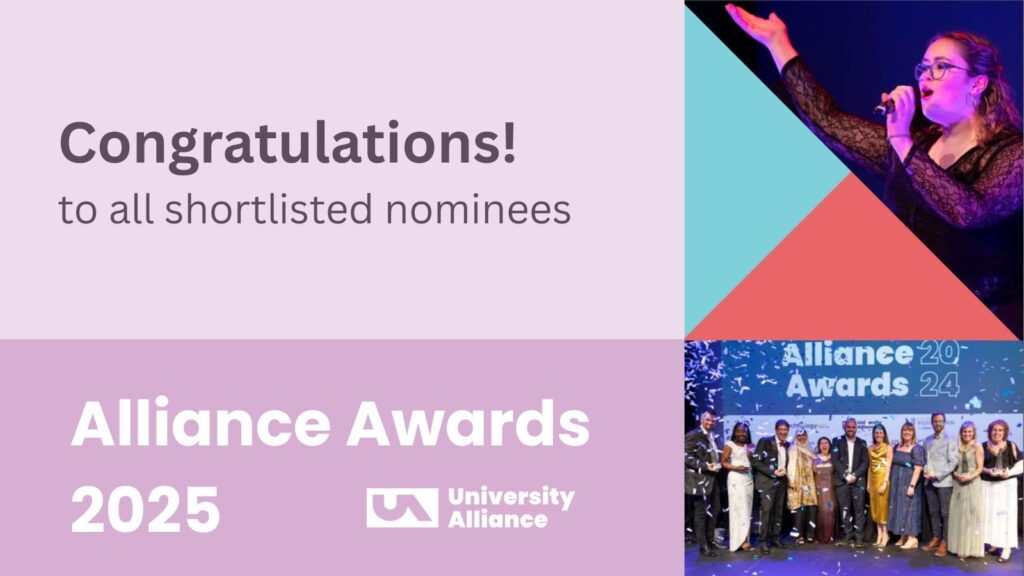William Annandale, Managing Partner for Quadrant Consultants Ltd, guest blogs for University Alliance
 University Alliance universities take pride in their focus on employability. They claim to ‘excel in preparing students for a career in industry and the professions’.
University Alliance universities take pride in their focus on employability. They claim to ‘excel in preparing students for a career in industry and the professions’.
YouthSight’s annual survey, Higher Expectations, provides insight into how important this is to students when thinking about where to study – and their experiences once they arrive.
Since 2006, we have been surveying first year undergraduates with questions about university applications, costs, choosing a course, communications, open days and early student experiences. We were able to look at this data to ascertain whether there were any interesting differences between students at different types of university – classified according to mission group (e.g. University Alliance, Russell Group, Million+, the former 1994 Group and GuildHE).
For all students, perhaps not surprisingly, future employability has become increasingly important in their decision about which university to choose (over 50% saying ‘very important’). Within this, they see their choice of course as being more important than their choice of university.
Of all the factors that might help them get their first graduate job, students see a work placement or work experience as part of their degree as being by far the most important. The top four factors in 2014 were:
- Work placement or experience (74% of the total sample)
- A ‘First’ classification (50%)
- The subject of the course chosen (41%)
- The university attended is a ‘top’ university (40%)
When focusing in on University Alliance students, it is clear that good placement opportunities are even more important in their decision about which university to choose than for students from other university groups. The same pattern exists when asked how important it is that their university has strong links with industry – with a far greater proportion of University Alliance students stating that they believed their university had strong links with industry than Russell Group students.
So what should University Alliance institutions do with this information? We suggest the following four points:
- Review their existing communications and, if not done recently, conduct research amongst prospective students to understand whether they are picking up the messages about how the university will enhance their employability.
- Put particular emphasis on placements and industry links. These potentially provide a point of differentiation from other institutions.
- Given that course choice is more important than university choice regarding future employability and earning potential, information about how the institution enhances employability should drill down to course level.
- Make use of graduate testimonials – research generally has shown that promoting benefits for prospective students is more credible when communicated by people they think of as being like them.
More broadly, these insights may prompt University Alliance institutions to review their proposition and positioning, to look at what they should be communicating that will help attract and convert target students versus other institutions they may be considering or have offers from.
Our definition of proposition and positioning is straightforward:

Too often, organisations develop propositions that are ‘inside:out’, focusing on their features and what they believe they have to offer, rather than understanding what their target market needs are and focusing on the benefits they can bring
These insights may help University Alliance institutions think from the ‘outside:in; it’s certainly worth reviewing propositions and positioning regularly, especially at a time of change and opportunity.
If you’d like to hear more about this analysis, contact William.




